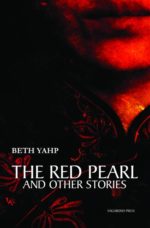 The Red Pearl and Other Stories
The Red Pearl and Other Stories
By Beth Yahp
Vagabond Press, 2017
ISBN 978-1-922181-51-0
Reviewed by PAUL GIFFARD-FORET
Australian, Malaysian-born writer Beth Yahp’s short story collection The Red Pearl and Other Stories (2017) navigates between different locations and time periods. It is resolutely transnational and transhistorical in nature. At times, the collection veers towards the metaphysical and abstract. Yahp also experiments with different forms, styles, modes and genres of writing. The title story draws its suggestive force from what a specialist in Asian Australian fiction, Tseen Khoo, had defined as “Oriental grunge” in her analysis of Lillian Ng’s novel Swallowing Clouds. As often in Asian Australian women’s writing, the “sexotic” is deployed as a strategic (al)lure. The cultural politics of the collection’s cover page is relevant in this matter. A young Orientalised woman appears dressed in a crimson cheongsam, looking passive, her lips closed, with the top of her face cropped out from the cover frame. In so doing the Orient comes to be marketed and packaged as a desired object of fantasy deprived of the basic attributes of subjecthood, such as the power to think and reflect, as well as to see and develop a critical worldview, or speak of its own volition. “The Red Pearl” is a love tale between a sailor and a dancer met at the Shanghai Bar. Located in an unnamed Asian port city (most likely Singapore), the story bears “the promise of anonymity, abandonment, delirium, dream,” (Yahp 43) as well as poetic grace. Counter to what might be expected from the book cover, the lover clearly has an agency and power of her own, as proven by the fact that “when she agrees to dance, the sailor lies mesmerised.” (44)
Male-female relationships are also addressed in Yahp’s introductory story in the collection, entitled “The Other Room,” about a woman apparently gone mad. From her side of their adjoining wall, she observes through a peephole a man fashioning doll-like female faces made of clay or glass that he hangs on the wall. This “other room” adjacent to hers is in many ways a product of her imagination and a metaphor for the mind. The female narrator’s mind is utterly alienated and colonised by her obsession with faces and inability to move beyond her “imago.” The term in psychoanalysis stands for “an unconscious idealised mental image of someone, especially a parent, which influences a person’s behaviour.” (Oxford Dictionary of English) I am here reminded of Lyn Jacobs’s literary essay, “About Face: Asian-Australians at Home,” concerned with fiction that may indeed remain about face unless women authors of colour have a creative room of their own, to paraphrase Virginia Woolf. The mysterious, unnamed craftsman situated in the other room “shapes faces in the dark. In the sweltering dark he traces the outline of my face, the roughness of my skin, and his hand is sometimes cold, sometimes burning.” (9) On display in this brief extract is the surgical care for symmetry and balance used by Yahp to craft her sentences. Yahp’s streamlined style matches in turn the man’s plan to rectify the narrator’s psyche: “You are in my image although you are other than I. You are not perfect. You are a scar. You watch and listen but you cannot speak. You watch through a crack in the wall like a thief. You are a slur, yet you are nearest to me. I will make you perfect.” (11)
The theme of gender oppression runs throughout the collection, as befits current debates in the West and beyond over sexual violence and predatory behaviour in the wake of the #metoo movement. It is made particularly poignant in “Point of no Return,” a story that tackles the Malaysian youth’s relation to sexuality in the face of a highly conservative society. As Nicholas Jose notes in the collection’s afterword, Yahp keeps returning to her native country, “realis[ing] how deeply and passionately she is invested in Malaysia as sometime citizen and activist,” (217) although Yahp left her homeland as a student for Australia decades ago. This Nietzschean eternal return of the diasporic back to its roots is a gesture I have observed before in this literary journal amongst more mature Asian Australian writers. Such writers do not so much aim at reconnecting with their origins as they intend to shed new light on the neighbouring Asian region for Australian readers, beyond Orientalist clichés. For Yahp, this preoccupation with Malaysia is nothing new but has indeed remained a constant in her work, from her award-winning novel The Crocodile Fury (1992) — a foundational literary text in Asian Australian fiction — to the publication of her family memoir Eat First, Talk Later (2015), which to a large extent discusses contemporary Malaysian politics and the resurgence of grassroots contestation from the late 1990s onwards. Yahp’s valuable contribution to demystifying Asia in the eyes of Australian readers challenges the widespread view that Malaysia is a successfully democratic, multiracial society similar to other multicultural nations such as Australia.
“Point of no Return” is a phrase that refers to a woman’s loss of virginity. Malaysia turns out to be a religiously intolerant, deeply divided country that polices its citizens and in particular its youth over private sexual matters and mores, in the same way that other hardline Islamic nations such as Iran do elsewhere. Yahp forcefully demonstrates the extent to which in Malaysia, the dominant, state-controlled media have played a decisive role in moulding the youth’s mindset and desires. Interwoven into the main narrative are newspaper clippings that the two protagonists, Bel and Deen, start collecting in a desperate bid to seam back those cut out pieces metaphorically standing for mutilated female body parts. As the postcolonial feminist scholar Gayatri Spivak warns, “couture carries the echo of the coupure or cut — the cut from the place or origin.” (172) These clippings (coupures in French) tragically project onto the young couple an image of their shared future with no outlet in sight but death, rape, murder, or the necessity for the youth to abstain from sex as a means of self-protection. These clippings constitute a most brutal rite of initiation into adulthood, a lesson that perhaps only the anecdotes or self-help sections of newspapers or popular magazines could teach them concerning violence (to gloss Frantz Fanon’s classic anticolonial essay) and the policing of youth deemed “deviant” or “sexually offensive;” the arrest of female teens at nightclubs for wearing “provocative” clothing; how there persists a strong incentive for Malay girls to remain virgin before marrying; how murdering a woman is deemed a lesser crime if she is not a virgin, based on a forensic examination of her vagina; the State’s repression of queer minorities; cases involving young girls or students or even women who, being unwed, decide to get rid of their babies; or the lingering taboo of divorce; plastic surgery and racial bleaching. In this regard, the irony consisting in forbidding plastic surgery and Botox injection under Islamic law, on the one hand, while tacitly condoning the disfigurement and dismembering of women by sexual predators, on the other, is not lost on Yahp:
She read: Two Syariah Law lecturers [stated] that the use of Botulinum Toxic A (Botox) to enhance beauty is haram (prohibited)…[since] Botox injections [were] not part of general regulation governing beauty process and procedure as allowed by Islam… [They] based their finding on the fact that the use of Botox would alter one’s look permanently and this could be considered as an act of deceit.
He read: Bone fragments of a Mongolian model who was shot twice and her body blown to bits with explosives were found on a hill near the Empangan Tasik Subang…Sources said [she] was shot in the head…before explosives were taped to her body and detonated. (103)
Yahp’s collection contains multiple instances of violent rupture changing the course of history and interrupting the main thread of the narrative, as in “Time and Again,” or constituting its chief fabric, as in “In 1969.” In “Time and Again”, the female protagonist, who happens to be a writer sojourning in Paris, like Yahp, bears witness to the Charlie Hebdo massacre, in which terrorists opened fire on the headquarters of a satirical newspaper, killing dozens in the name of jihad. This resulted in the implementation of a more or less permanent state of emergency vindicating the curbing of press freedom and freedom of speech, the widespread use of preventive detention and house arrest of all types of dissidents — a situation, proportion wise of course, that Yahp would have been familiar with, having lived under Malaysia’s authoritarian regime. 1969 is an allusion to the Malaysian race riots, a historical event officially described as a case of Sino-Malay sectarian violence that led to hundreds of casualties, but which effectively marked the start of bumiputra rule (or ethnic Malay supremacy) in areas of employment, education, or the administration, and the ensuing relegation of other minorities — Chinese, Indians, Eurasians — to a second-class status. In both of these instances of violence, those who have had to suffer consequences have not been the perpetrators but the victims instead; the French population as a whole, on the one hand, and the ethnic Chinese in Malaysia, on the other, who represent the overwhelming bulk of those lynched to death in the riots, so that it would be more appropriate to call these a pogrom. It is in the midst of such a terminal atmosphere that the protagonist’s fellow writer in “Time and Again” reminds the reader of the enduring power of literature: “It’s there, and will never leave. No one can take it away, even if the ink dries in its pen, the pages rot, the buildings crumble, the stony ground turns to dust.” (187)
Yahp’s collection conveys other elements of violence still that are in some sense far more insidious than being the target of anti-Asian racism in a suburban train, as happens to Lisa, a freshly arrived migrant and university student in Sydney: “In one carriage someone has drawn large anti-Asian signs, like anti-smoking signs, an Asiatic face cancelled out.” (160) The story where this incident is narrated, “So we walked down Abercrombie Street,” takes on a nostalgic tonality for Yahp, by featuring a group of tertiary students in creative arts who share a flat in the largely immigrant outer Sydney suburbs, using it as a kind of bohemian haunt. In their film-making project, Janie and Lisa freely embrace a Kantian view of art — purposeless, disinterested, immanent — yielding to the pleasure principle of communion and communication: “Form is content. The telling of a story is the story. The film is about boredom and escape, they write. If form is content should the film be boring, escapist? And they draw a vase the shape of a heart and they fill it with flowers. They talk about everything except the film.” (154) Violence, then, consists in the abandonment of youthful innocence, of the ability to dream and of the will to resist to growing disillusionment born out of the pressure to conform and access relative material security.
In “The Beautiful Hour,” migration is initially experienced as an epiphany by its central character, Prabhu, who left Malaysia for Australia in 1958, after Australia somewhat eased out its immigration policy regarding non-white applicants. Yet Prabhu actually epitomises the “reluctant migrant,” an allusion to Mohsin Hamid’s novel The Reluctant Fundamentalist, since Prabhu is not grateful towards his adopted country, as might have been expected from him. He prefers to cultivate Meursault’s position of the Stranger in Albert Camus’s eponymous novel, who refused to cry on command at his mother’s funerals, as decency and convention would have required. Both Changez, the protagonist in Hamid’s novel, who left Pakistan for New York in the midst of 9/11, and Meursault, a pied noir, a person of French origin living in colonial Algeria under French rule, retain a critical, detached outlook towards the respective societies in which they have remained outsiders. Prabhu’s vehement views of Australian society, as being struck by “cultural poverty,” excess “freedom” and the lure of opulence and stability, must be placed in the context of the White Australia Policy and Australia’s ignorance of its indigenous past and Asian neighbours. Instead of the Lucky Country, Prabhu dubs Australia the “Great Southern Lassitudes.” Prabhu refuses to let himself put to sleep by the slow, quiet drone of the status quo as questions keep buzzing back to him in the manner of a fly, a flea or gnat. Here, to “resist” (145) means withstanding the false appeal of pacified domestication and middle class bliss from Sydney’s ethno-proletarian urban sprawls, where Prabhu now lives. It also means recalling the violence upon which White Australia as a settler colony was founded.
The last story title in the collection, “Dogs in Love,” can be understood as a metaphorical description of the academic workforce, or what Yahp calls the “lowest common denominator.” Yahp draws a parallel with the impassioned yet pauperised figure of the Clerk in Geoffrey Chaucer’s classic medieval epic poem The Canterbury Tales, from which she quotes this pentameter: “And gladly would he learn, and gladly teach.” (202) Lecturers and researchers are often passionate about what they do, yet their job has become increasingly absurd and dehumanising in the face of the onslaught of a market-driven nature on universities across Australia and around the world. Many Asian Australian writers, perhaps compelled by the precariousness of their position on the literary market, must complement their revenues with an additional occupation. Some, like Yahp, have joined academia as creative writing lecturers. In this regard, “Dogs in Love” demonstrates how lecturing has been downsized to an accounting, managerial logic. As the narrator’s ill-named HR explains to her:
‘That’s what the numbers say,’ she tells me. She taps on her keyboard, gives me a bonus of twenty percent here, five percent there in a different column, but my overall numbers are still too low.
‘You’ve got to make the percentages up in teaching,’ she sighs, adding three tutorials to my workload, over three courses I haven’t taught before. It’s a week before the new semester begins. She says: ‘Yours is a teaching contract anyway.’ If I reduce my hours, she tells me, I’ll lose my bonuses, and I’ll have to teach the old full workload, at half pay. (208-9)
There is violence in numbers, just as there is violence in certain words that are hammered in by those performance review jargonauts of the newly corporatised higher education system. Overall, Yahp may be considered an itinerant writer, not so much because she happens to be an experienced traveller who has lived across several continents, but rather because she has moved in and out of the academic profession, as well as in and out of the business of writing, publishing and marking other people’s work. Significantly, Yahp’s collection was published by a small, independent publishing house, Vagabond Press, which specialises in Asia-Pacific literatures and has headquarters in both Sydney and Tokyo. More than two decades stand apart between the publication of The Crocodile Fury and Yahp’s family memoir Eat First, Talk Later, aside from essays and short stories, some of which appear in The Red Pearl. A mode of living and being in the world encapsulated by Charles Baudelaire’s nineteenth figure of the Parisian metropolitan flâneur (Yahp 182), itinerancy seems especially suited to the short story format and to this collection in particular — stories directly drawn from Yahp’s rich, multifaceted imagination and life as a creative writing practitioner, traveller, and committed activist.
Works Cited
Jacobs, Lyn. “About Face: Asian-Australians at Home.” Australian Literary Studies 20(3), 2002.
Khoo, Tseen. “Selling Sexotica: Oriental Grunge and Suburbia in Lillian Ng’s Swallowing Clouds.” Journal of Australian Studies 24(65), 2000.
Spivak, Gayatri C. An Aesthetic Education in the Era of Globalization. Harvard University Press, 2012.
PAUL GIFFARD-FORET obtained his PhD in Anglophone postcolonial literatures from Monash University in Australia. He works as a sessional lecturer in English at La Sorbonne University, Paris. He is involved in political activism and a member of the New Anticapitalist Party (NPA).
 out of emptied cups
out of emptied cups 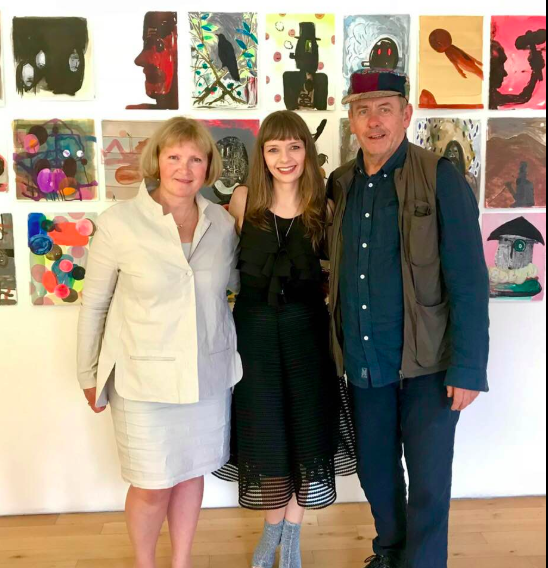
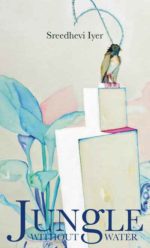 Jungle Without Water and Other Stories
Jungle Without Water and Other Stories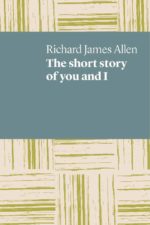 The short story of you and I
The short story of you and I The Red Pearl and Other Stories
The Red Pearl and Other Stories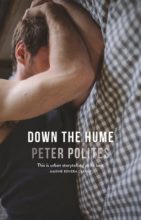
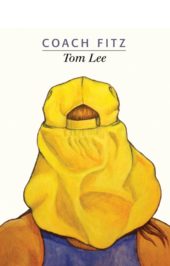 Coach Fitz
Coach Fitz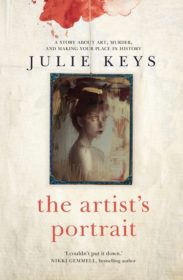 The Artist’s Portrait
The Artist’s Portrait Imminence
Imminence The Burning Elephant
The Burning Elephant Autobiochemistry
Autobiochemistry